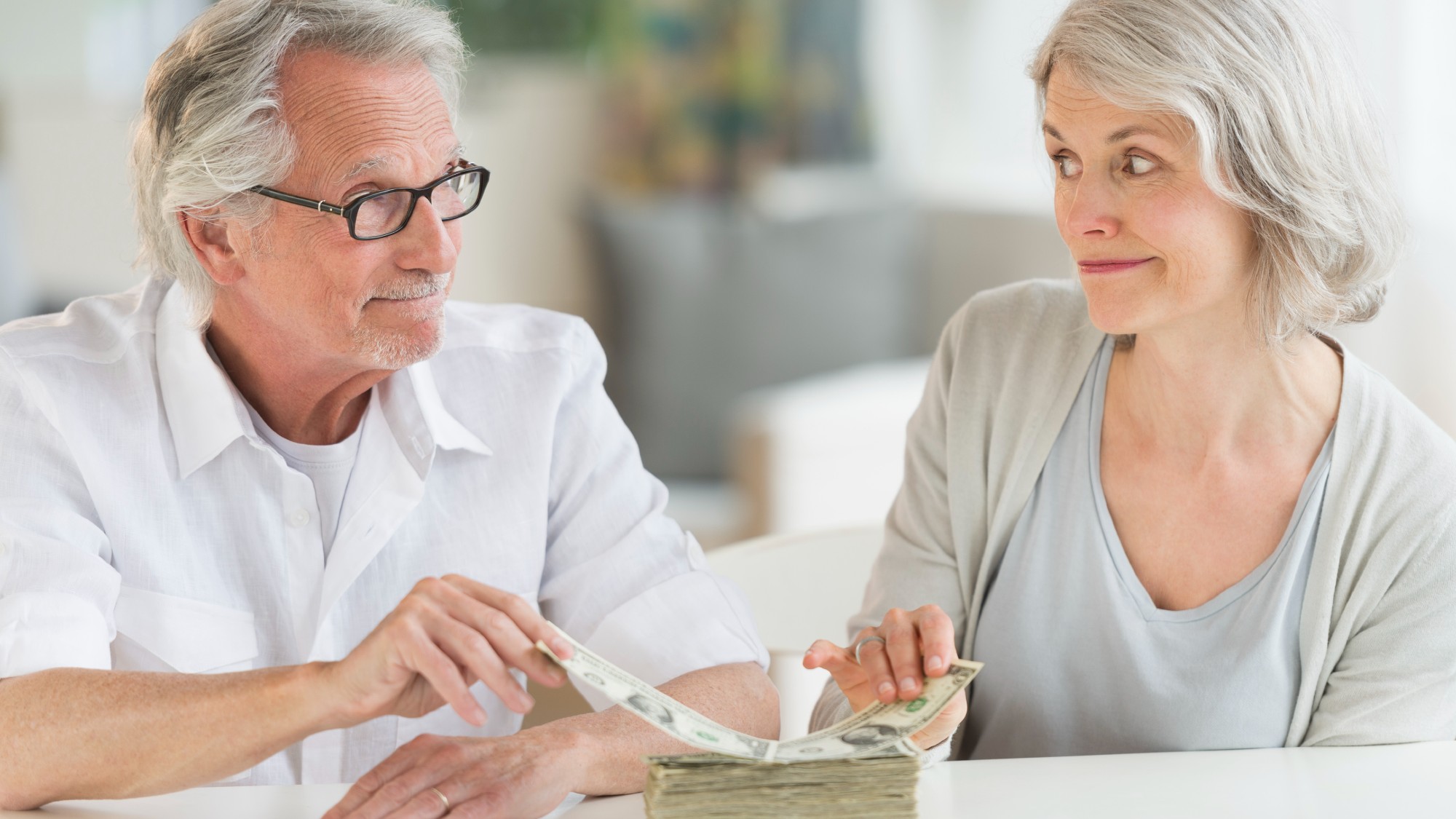Oil price posts two-year highs - but how long can it last?
Brent rose above $59 a barrel this week, its best third-quarter showing since 2004

Oil price trend is 'all over the place'
14 October
Oil price trends are "all over the place" according to one expert, speaking in the wake of a volatile trading session on Tuesday in New York that saw the commodity jump sharply before giving up gains through the afternoon.
International benchmark Brent crude rose in the morning as traders sought to buy at bargain prices following a five per cent slump on Monday. This was the sharpest fall in more than a month and was caused by a report showing four-year high in output from the powerful 12-nation Opec cartel in September. Some traders believed the sell-off had been "overdone".
The Week
Escape your echo chamber. Get the facts behind the news, plus analysis from multiple perspectives.

Sign up for The Week's Free Newsletters
From our morning news briefing to a weekly Good News Newsletter, get the best of The Week delivered directly to your inbox.
From our morning news briefing to a weekly Good News Newsletter, get the best of The Week delivered directly to your inbox.
But oil fell back again and ultimately closed lower for the day at a little more than $49 a barrel, where it remained on Wednesday morning in London. This followed further negative economic data from China and a report from the International Energy Agency, which predicted the supply glut would continue throughout 2016.
"The market is all over the place," Matt Smith, director of commodity research, told MarketWatch. He explained Tuesday's rebound was "stunted by weak data out of China and a bearish-tilted IEA report—leaving crude to lick its wounds and consolidate".
However, a recovery could be in the offing. "The market psyche is gradually switching from the current fundamentals of a heavily oversupplied market to 'tomorrow’s prices today' - a market likely to eradicate the surplus by 2017, and at least endure thinner oversupplies in 2016," said Matthew Parry, senior oil analyst at the International Energy Agency.
If such a sentiment shift is borne out, claims that the oil price has bottomed out may prove to be accurate, although it may still take some time before a recovery to a broadly profitable level for production is reached.
A free daily email with the biggest news stories of the day – and the best features from TheWeek.com
Reuters reports that some nations within the Opec cartel are not prepared to wait. Venezuela, which faces the real threat of bankruptcy, has called for production cuts to set a price 'floor' of $70.
They and other producers have suffered the most from the price slump, caused largely by Opec's insistence on keeping production high to retain market share despite the boom in US shale production.
Oil prices take biggest one-day tumble in more than a month
13 October
The recent oil price rally gave way yesterday as continued high output from the 12-nation Opec cartel undermined confidence in an easing of the current oversupply.
Having risen above $53 a barrel, international benchmark Brent crude fell by around five per cent to a little more than $50, its sharpest decline since the beginning of September. It is now trading at less than this threshold again in London. US benchmark West Texas Intermediate has also fallen from more than $50 a barrel to below $47.
The latest slide follows the monthly output report from Opec, which reveals the group produced 31.57 million barrels a day in September, up by about 109,000 barrels a day from August and above a target of 30 million barrels a day, the Wall Street Journal reports. This is the highest reported level since April 2012.
With global oversupply currently running at about one million barrels a day at a time when stockpiles are at record levels, traders sold off a rally that had gathered amid evidence of a slowdown in US shale production. The latest figures from the US Energy Information Administration suggest the domestic slowdown is continuing, but as this output only represents about five per cent of the global total there would need to be a commensurate response from Opec to really turn the tide.
Analysts do appear to broadly agree that the market is slowly rebalancing, but most expect continued volatility and even another sharp decline before a sustained recovery sets in. Speaking to the Sydney Morning Herald, ANZ analyst Daniel Hynes forecast Brent crude would reach $44 a barrel at the end of the first quarter of next year when Iran could up its exports following a lifting of sanctions. Hynes reckons oil will rise back to $50 by the end of next year and push on thereafter.
UBS analyst Nik Burns also said he could not be sure prices would not dip to a new low in the coming six to 12 months, but agreed "all signs are pointing to a tightening in the global demand/supply balance in the next 18 to 24 months" and that "significantly higher oil prices are required… to justify investment to produce more oil to meet demand".
Oil prices are creeping up, but can the rally last?
12 October
Oil prices have bottomed out twice this year, but are now several days into their latest upward swing. Traders are now questioning whether the latest rally will prove to be the end of a slump that has persisted for more than a year.
Overnight, the international benchmark, Brent crude, passed the $53 a barrel mark as optimism continued to grow that a nascent production "rebalancing" would finally begin to reverse oversupply in the market. The US benchmark, West Texas Intermediate, is now back above $50 a barrel, a key threshold around which it has traded for the past two sessions.
The Wall Street Journal says the latest nudge higher followed further projections of a slowdown in US production. The US energy watchdog, the Energy Information Administration, predicted last week that output would fall from 9.2 million barrels a day to 8.9 million next year, echoing a range of recent forecasts.
But this alone may not be enough to definitively turn the tide. US shale production, which has boomed in recent years and is among the most expensive in the world, has proved more resilient than many expected and even rebounded significantly last week. Even a reduction of a few hundred thousand barrels may not be enough to correct global supply, which currently outstrips demand by an estimated one million barrels a day at a time when reserve stockpiles are already at record levels.
The Wall Street Journal notes that traders were also responding to more reports that Saudi Arabia, the de facto leader of the Opec cartel, may yet agree to hold talks with Russia to discuss reducing its 10 million barrels a day output in response to falling production elsewhere. Most experts agree that this would be the real trigger for oil prices to turn.
Whether this will actually happen remains in doubt. A report last week in the same paper suggested that Saudi Arabia was defiantly prepared to hold production higher unless other major exporters such as Russia trimmed their output – but there is little evidence that Putin is prepared to play ball.
Without a concerted effort around the world, some experts have instead predicted prices are set for another fall.
Oil price: 'we've got some bottom-fishing left'
09 October
The oil price has rallied this week, rising above a key threshold yesterday as the dollar fell, effectively making the commodity cheaper for many international buyers.
But many experts continue to assert that the fundamental supply and demand picture is not conducive to sustained higher prices. There are predictions the recovery in recent sessions will prove to be a "dead cat bounce" and that there is still "bottom-fishing left" before a floor is found.
The Wall Street Journal notes US benchmark West Texas Intermediate rose above $50 a barrel for the first time since July on Thursday, while its international counterpart Brent crude settled in European trading at above $53.
After a minor dip in Asia overnight, both are back above these levels on Friday morning. The Journal says the rises reflect "expectations of falling production and growing global demand".
A surge towards the end of Thursday trading in New York was also driven by the release of dovish minutes from the latest Federal Reserve rate-setting meeting, which some took as a sign rates will be held for longer – and that prompted a fall in the dollar.
But many remain unconvinced oversupply is easing enough to support a prolonged upward shift.
Official data published on Wednesday revealed US reserves and production unexpectedly rose last week, while supplies are still thought to be outstripping global demand by one million barrels a day.
"We expect this rally to reverse and reiterate our forecast for lower prices for longer," Goldman Sachs, one of the most bearish forecasters, wrote in a note to clients.
Warren Gilman, chairman and chief executive of CEF Holdings told CNBC that any rise above $50 by WTI will be "short-lived" and that the next "down leg" could see a further fall than the last.
This would effectively repeat the pattern of this year, when Brent bottomed out at $45 a barrel in January before recovering around $20 over the subsequent five months.
The downturn set in again in June and the benchmark eventually hit a new six-year low of $42 a barrel.
"We still have a problem of growing supply and, in order to cut that, we need prices to fall further," said Gilman.
Oil price trend 'impossible to pin down'
8 October
A trend in oil prices is currently proving difficult - and perhaps even "impossible" - to pin down.
The Wall Street Journal says that key benchmarks "retreated" from one-month highs today, after the latest report from the US energy watchdog revealed crude oil supplies in the US hit a record high and production unexpectedly increased.
Energy Information Administration data showed "total commercial supplies of crude oil and petroleum products rose by 2.3 million barrels last week to 1.3 billion barrels, a record high in data going back to 1990".
US shale production, which has been falling from highs reached in the spring, also jumped from nine million barrels a day to 9.2 million barrels, bucking a recent downward trend that had given hope a supply glut was softening.
Brent, the global benchmark, fell 1.1 per cent to $51.33 a barrel on the ICE Futures Europe exchange, while the US benchmark, West Texas Intermediate, fell 1.5 per cent to $47.81 a barrel on the New York Mercantile Exchange.
The Journal notes that a surge in oil prices so far in October has been driven by statistics showing falling production and steady drawdown on US supplies, with forecasts on Tuesday suggesting this pattern had continued last week.
That official figures now show otherwise emphasises the "conflicting" picture in different bodies' projections that is making reliable trends "difficult - or sometimes impossible - to pin down".
FastFT adds that oil was heading up modestly again on Thursday morning in Europe - Brent edged up to $51.90 - despite there being "little in the way of concrete news to shape the price so far".
It says the call by some traders that the rise in recent weeks shows we have hit a "bottom" in prices could be premature, saying "those of a more bearish disposition will point out that calling the bottom has proved a treacherous exercise this year".
Even if oil does now have a floor, it will need to record a substantial rise before prices hit a level that alleviates the pain on producers, many of whom are currently making losses on output.
-
 Received a windfall? Here is what to do next.
Received a windfall? Here is what to do next.The Explainer Avoid falling prey to ‘Sudden Wealth Syndrome’
-
 How to save more for retirement next year
How to save more for retirement next yearthe explainer Secure yourself a suitable nest egg
-
 7 hot cocktails to warm you across all of winter
7 hot cocktails to warm you across all of winterthe week recommends Toddies, yes. But also booze-free atole and spiked hot chocolate.
-
 How might the Israel-Hamas war affect the global economy?
How might the Israel-Hamas war affect the global economy?Today's Big Question Regional escalation could send oil prices and inflation sky-high, sparking a worldwide recession
-
 Recent mega-mergers could signal a turning point for the US oil industry
Recent mega-mergers could signal a turning point for the US oil industryTalking Point Both Chevron and Exxon have recently spent billions to acquire smaller oil companies
-
 Has Saudi Arabia lost control of oil prices?
Has Saudi Arabia lost control of oil prices?Today's Big Question Kingdom goes it alone to cut production, risking tension with US and reigniting cooling inflation in Europe
-
 US angered by Opec+ oil cut
US angered by Opec+ oil cutSpeed Read Energy prices to rise further as producers slash supply by two million barrels a day
-
 Global oil demand forecast lowered for 2020 and 2021
Global oil demand forecast lowered for 2020 and 2021Speed Read IEA report says jet fuel demand remains the major source of weakness
-
 Are US-Iran tensions flaring again?
Are US-Iran tensions flaring again?In Depth Trump threatens military action over Twitter
-
 Can a deal be struck to raise oil prices?
Can a deal be struck to raise oil prices?In Depth Opec+ will convene today over video link in a bid to boost crude
-
 What do negative oil prices mean?
What do negative oil prices mean?In Depth Perfect storm of oversupply and storage shortages sees producers paying to get rid of US crude